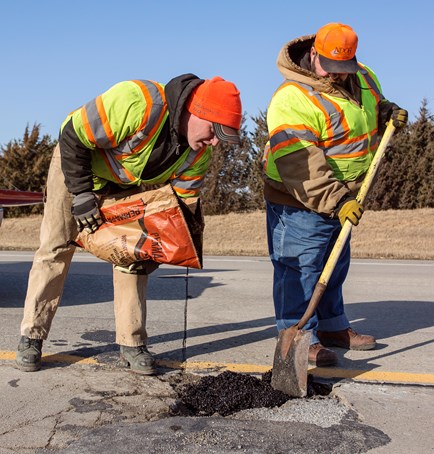NDOT on Pothole Patrol
 Temperatures have started to rise. Birds are singing. The sun is showing itself more readily and fewer clouds are in the sky. Another winter is in the books, which means a new season is upon us—pothole season. Late winter and early spring is prime time for the appearance of our native Nebraskan tire-biters.
Temperatures have started to rise. Birds are singing. The sun is showing itself more readily and fewer clouds are in the sky. Another winter is in the books, which means a new season is upon us—pothole season. Late winter and early spring is prime time for the appearance of our native Nebraskan tire-biters.
Potholes mature as water (usually from rain or snow-melt) seeps through cracks in the pavement to the soil and material below. Water that doesn’t drain away from the damaged area goes through several cycles of freezing and thawing, each cycle damaging the pavement even more.
Eventually, as the weather warms and more water evaporates, an empty space is left below the damaged area. All the while, daily traffic adds even more stress to the damaged area. Stress that eventually collapses the remaining pavement into the void below. With that, a Nebraskan pothole is born.
Keep your eyes open for Department of Transportation crews out on the road. Crews first use a “cold-patch” material, a quick and easy way to seal up the hole, to keep traffic moving while they plan out more permanent solutions for troubled areas.
Once weather, staffing, pavement conditions, and traffic patterns can be managed, maintenance teams will return to the site. They will “square up” the hole – cutting even lines around it – and clear it of debris. Using tack oil and a hot-mix asphalt, the clean space is filled in and tamped down with heavy equipment. After the asphalt has set, traffic can return to its normal, non-porous flow.
Timely maintenance is important in preventing holes from forming in our pavement. According to the American Association of State Highway and Transportation Officials, every $1 spent to maintain a road avoids $6-$14 needed later to rebuild it. Maintenance crews sealing cracks on the highways and interstates are just one of the ways that the NDOT mitigates the damage done by potholes and saves the state money in the long term.
